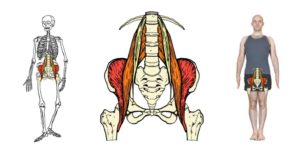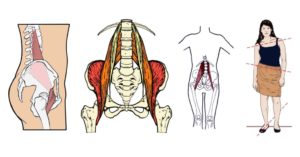Is One Leg Shorter Than the Other? Ask the Psoas.
The human body is amazing in so many ways.
One of the more interesting things going on in the body is symmetry versus asymmetry.
Our skeleton is profoundly symmetrical.
Our skeletal structure is the same on both sides of the body with the corresponding bones all being the same size and shape.
There is one exception and that is when we get to the toes. For whatever reason, symmetry goes out the window and the toes are free to move in different directions.
Do you think you have one leg shorter than the other?
In truth, one in a million people might have one leg shorter than the other due to one of the bones being shorter on one side but it is very rare.
Like I said our skeleton is very symmetrical. But when it comes to the organs things are quite different inside.
It should seem pretty obvious that we can’t change the shape of our bones. But when it comes to leg length discrepancy, we often fail to take our muscles into account.
Often the reason for the skeletal imbalance is the different tone of the musculature on both sides of the body.
Our muscles are different side to side in that we all have a dominant side. We are always going to be stronger on one side of the body than the other.
This strength manifests in size. Stronger muscles tend to be larger than weaker ones.
A number of years ago when I went to the Bodies exhibit in NYC’s South Street Seaport.
The aspect of the show that struck me most was viewing the same muscle on both sides of the body.
What is Symmetry?
 Very often you would have a strong solid muscle on the right side that looks like it was straight out of an anatomy book.
Very often you would have a strong solid muscle on the right side that looks like it was straight out of an anatomy book.
And then the muscle on the other side there would be this limp and flaccid excuse for a muscle that barely existed.
So why then is one leg is shorter than the other?
Most often it is because of the tightness of my favorite muscle, the psoas major.
Everyone’s side-to-side imbalance varies for different reasons but my take is that leg length discrepancy is mainly due to the psoas muscle.
The psoas connects at the base of the rib cage, all along the lumbar spine and then down and back to the back half of the femur, or leg, bone.
When the psoas is tight it pulls the affected leg up into the hip socket and often pulls the hip up towards the rib cage and the rib cage down towards the hip.
That is just one of the ways a tight psoas can manifest.
But the shortening or pulling up of the leg into the hip socket is usually the first response to any tightening in the psoas muscles.
And this leads to one leg being shorter than the other.

